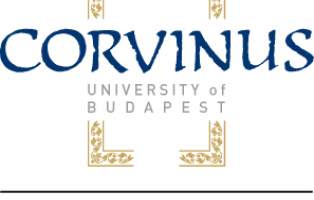Well regarded internationally, the Hungarian higher education sector consists of state universities, public universities, state financed colleges and religious educational institutions – with higher education qualifications recognised in the EU and beyond.
The higher education system in Hungary is well regarded internationally and it has three levels with Bachelor (undergraduate – 3 years), Master (graduate – 2 years) and PhD (doctoral – 3 years) degrees awarded. Unified, undivided, longterm Master’s degree programmes (5 to 6 years) are offered in some fields of study (e.g. in human medicine, dentistry, pharmacy, veterinary medicine, architecture, teacher training, law and in a few programmes of art education) leading to a first degree but equivalent to a MA/MSc degree. Higher Education qualifications awarded by Hungarian institutions are recognised in all European Union countries. The country has a total of 20 state-financed universities, seven public universities, ten state-financed and 31 non-state financed colleges. In terms of tuition fees and as a general guide, international students can expect to pay 250,000 INR– 400,000 INR for a Masters degree (excluding medicine and similar courses which can be more costly). A PhD is likely to cost in between 350,000 INR– 450,000 INR.

EMBASSY OF HUNGARY
2/50M, Niti Marg, Chanakyapuri, New Delhi, Delhi 110021, India
Tel. +91 11 2611 4737
In Germany there are over 400 institutes of higher education, of which 140 are entitled to award doctorates, and around 200 universities of the applied sciences. Courses at German Higher Education Institutes cover more than 400 disciplines, and many institutions offer courses taught in English that lead to internationally recognised degrees, including Master’s and PhD. Prominent fields of study include: Engineering Sciences, Natural Sciences, Economics and Business Administration, Arts, Music, Architecture and Design – and there are over 1,600 international programs listed on the DAAD database. Almost half of Germany’s 2.6 million current students are women. With some 300,000 foreign students enrolled at German institutes of higher education, Germany has the third highest number of foreign students in the world. The number of Indian students in Germany has more than doubled in the last 5 years. Germany offers various forms of research locations: All in all, there are approximately 750 public-funded research institutions in Germany, plus research and development centres run by industrial corporations. The annual research budget is about 70 billion euro www.research-in-germany.de German universities do not charge tuition fees, neither from German nor from the international students. Living expenses amount to around 50,000-60,000 INR per month depending on the region. Some 35 German universities feature in the Global Top 400 of the Times Higher Education World University Rankings 2015-2016, of which 20 are in the Top 200 and 9 in the Top 100 – the highest ranked German Universities being Ludwig-Maximilians-Universitat Munchen at 29, Heidelberg University at 37, and Humboldt University of Berlin at 49.
The Hungarian Scholarship Board is responsible for submitting proposals to the Ministry of Human Capacities regarding international mobility and the national policy of scholarships and grants. These scholarships and grants (largely financed by the Ministry of Human Capacities of Hungary) are based on a pool system as well as on bilateral educational, scientific and cultural exchange programmes. Indian students are eligible for scholarships, please see For Further Information. The Campus Hungary Programme – conducted by the consortium of the Balassi Institute and the Tempus Public Foundation – was launched to enhance international student mobility in higher education. The Tempus Public Foundation is also responsible for the coordination of the Erasmus+ and CEEPUS scholarships in Hungary. The Balassi Institute offers language courses of 60-300 lessons at all levels and with various timings. The students of their Summer University participate in 25 language lessons per week. This is rounded up by 5-6 lectures (offered also in English) on a wide range of subjects, and cultural programmes and excursions are also offered to them. Students receive up to 20 ECTS credits for their work. The ‘Stipendium Hungaricum’ Scholarship Program was founded by the Hungarian Government in 2013. Under this program the Hungarian Party is offering scholarships for 200 Indian students annually to pursue studies in Hungary (see For Further Information). Hungary is a popular destination for international students and according to UNESCO’s latest figures the country attracted 17,500 international tertiary level students in 2012; the highest proportion of foreign students come from Germany and Slovakia, although there are a growing number of students from Asia including students from India. In 2015/16 a total of 4 universities in Hungary appear in the QS World University Rankings.




